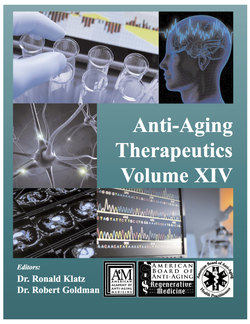Читать книгу Anti-Aging Therapeutics Volume XIV - A4M American Academy - Страница 32
На сайте Литреса книга снята с продажи.
TESTOSTERONE DEFICIENCY
ОглавлениеSome of the many symptoms of low testosterone include:
•Reduction of muscle mass despite adequate protein intake;
•Decreased muscle tone;
•Weight gain;
•Fatigue, low energy;
•Low self-esteem;
•Decreased level of HDL (high density lipoprotein) the so-called “good” cholesterol;
•Decreased sex drive;
•Mild depression;
•Dry, thin skin;
•Loss of pubic hair;
•Thinning and dry hair;
•Anxiety;
•Hypersensitive, hyper-emotional states;
•Erectile dysfunction (men only).
TRT can alleviate these symptoms. Restoring testosterone to normal levels can help to:
•Improve libido;
•Boost self confidence and self-esteem;
•Increase skeletal and cardiac muscle strength and mass;
•Improve stamina;
•Shed excess body fat;
•Stimulate growth of pubic and underarm hair;
•Maintain bone strength.
Testosterone also has vasodilating properties, which is valuable for patients with atherosclerosis. It also elevates neurotransmitters (especially dopamine), which can help to improve low motivation, depression and memory (especially in men). Finally, it also provides central negative feedback in order to temper overproduction of ACTH (adrenocorticotropic hormone) and cortisol.
When talking about TRT it is very important to consider the symptoms of testosterone excess, which include aggressiveness, facial hair or unwanted hair growth, acne or oily skin (face and body), and edema.
Interestingly there is a very poor correlation between scalp hair loss in men and women with elevated testosterone. Patients with these problems, both men and women, may have elevated dermal dihydrotestosterone (DHT), but almost all of these patients have low serum or salivary testosterone and serum DHT.
